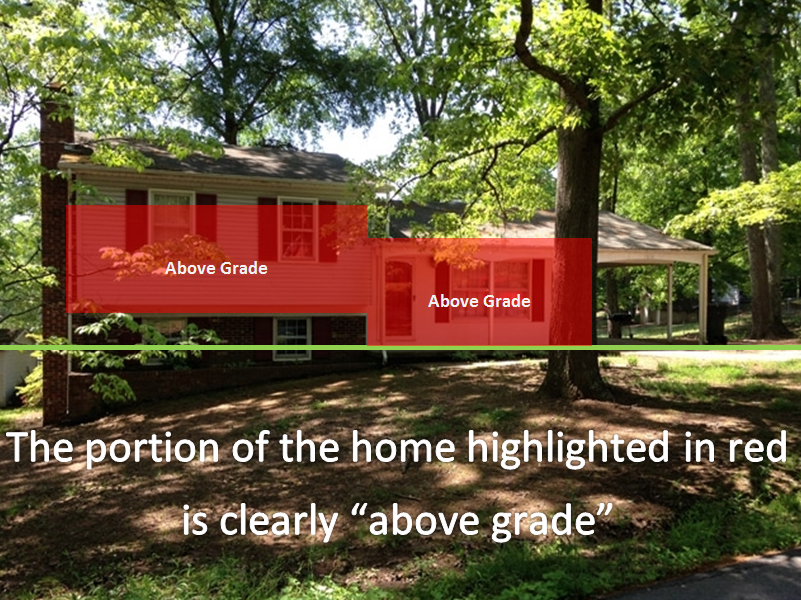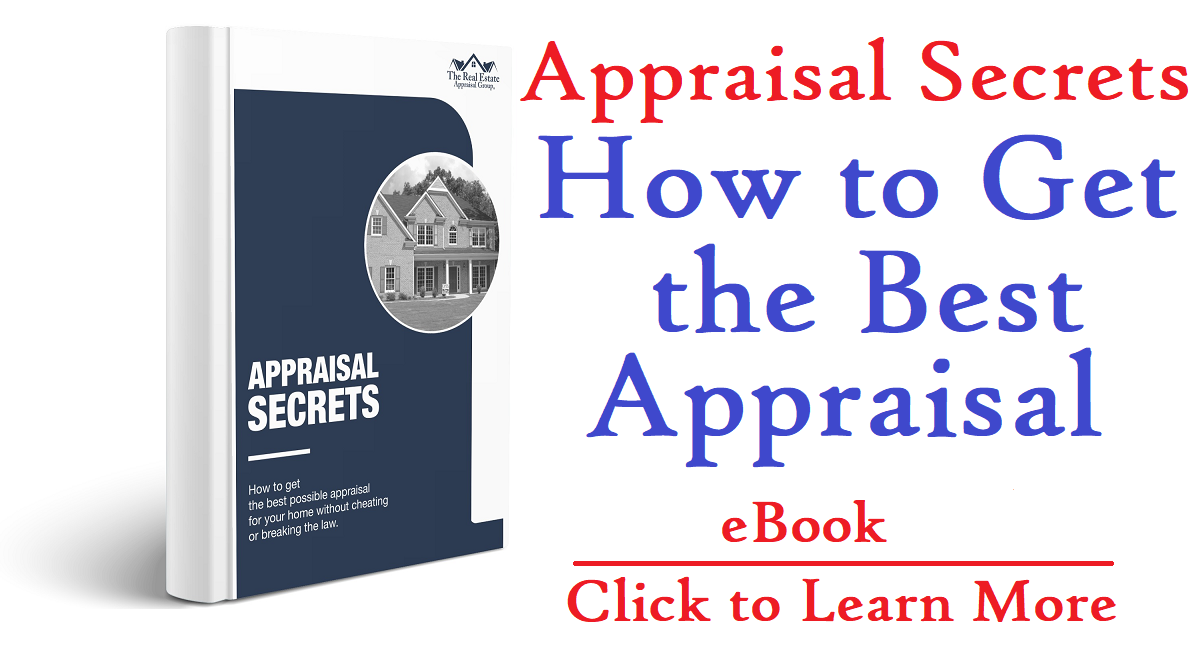
by Jonathan Montgomery | Dec 2, 2015 | Real Estate Terminology, Technology
Putting time and money into taking proper real estate listing photos may seem like a waste- after all, technology has reached a point where most current cell phone cameras are far superior to any camera you would buy from the store 5 years ago. Snapping a few quick pictures on a stroll across the property may seem sufficient- after all, the house should speak for itself right? Wrong. Even the nicest of properties can turn away potential buyers if the listing photos don’t properly highlight it’s features. As real estate appraisers, we sort through hundreds of listing photos every day. Having seen some of the best- and plenty of the worst- we can honestly say that the quality of the listing photos is definitely reflected in the days on market of a home. Better photos attract more buyers, get more offers, and sell faster- but what do I need to do to really take a good listing photo? 1. Include a shot from the curb. Everyone’s heard the term “curb appeal” before, and if your home has any, this one should be a no brainer. Be careful to always take photos parallel with the roof line– or else, you can create “landslide” effect, making it look like the property is on a tilt or needs some landscaping when in reality it’s perfectly flat. 2. Keep people and pets out of the photos (including the photographer in mirrors) Mirrors may help light a room, but buyers don’t want to picture anyone in this house other than themselves- that’s why their thinking about buying it. Also, not everyone is a dog or...

by The Real Estate Appraisal Group | Aug 6, 2015 | Real Estate Terminology, Uncategorized
As real estate appraisers, we read through tons of listings every day when searching for comparable homes. For the most part, these listings are all very similar. There are a few different strategies we’ve seen for writing a listing that always seem to catch our attention, and in our experience those are the properties that sell the fastest. The real goal when writing a listing is just to peak someone’s interest long enough to get your property a second or longer look. If your listing makes people curious, they’re more likely to forget about that 4th bedroom they just had to have when they see the photos of your properties spacious lawn- even though it wasn’t what they were looking for. Here are some tips to write a better real estate listing: 1. Don’t do what everybody else is doing. “Everyone does it this way; I guess this is just how you write a listing.” –everyone who’s property isn’t selling. Being original isn’t easy. It seems so simple to just copy-and-paste the features of the home you want to sell into a standardized template and post away- but that’s exactly what we don’t want. You want to stand out and be eye-catching, you want that buyer to click your link. There are a few good places in the listing that are best suited for a little originality. It may seem unorthodox, but don’t be afraid about scaring away buyers with your stand-out listing- you’ll attract a lot more viewers than you’ll lose. 2. The Beginning is Everything. The BEGINNING is your first chance to catch a buyer’s attention. It’s...

by The Real Estate Appraisal Group | Jul 1, 2015 | Real Estate Terminology, Uncategorized
The title says it all, folks. Newcomers, or anyone inexperienced in real estate, seem to hold a common misconception. There’s an old motivational saying along the lines of “you get what you give” or “you get out of it what you put into it.” It’s a good saying, it encourages people to work hard to achieve their desired results. It’s mostly true- but not in real estate. <a href="https://www.youtube.com/watch?v=FGY2T6EUe3A">https://www.youtube.com/watch?v=FGY2T6EUe3A&feature=youtu.be</a> When improving your house, it’s important to maintain a simple rule: Make sure the improvements you get are things that ANY buyer would want- not just you. If you can afford to pay for incredibly expensive elephant-ivory bathroom tiles, then great for you. Just keep in mind you’re probably one of very few people who would find that appealing- or be willing to pay for it. This is the same as overbuilding your home– it doesn’t just have to be bigger to be considered overbuilt. Ultimately, it’s important to research what sort of renovations, remodeling, or restorations will add the most value to your home before getting started. Obviously, it will pay off in the long run. Jonathan Montgomery Founder and President of the The Real Estate Appraisal Group.He has been a real estate professional since 1998. He’s been a broker, and investor and now serves as an appraiser. He currently works as an appraiser, doing real estate appraisals in Washington D.C., Southern Maryland, and Northern Virginia. #treagroup #realestate ...

by Jonathan Montgomery | Jun 4, 2015 | Real Estate Terminology, Uncategorized
All across the country, for the majority of neighborhoods, there is a general price range where most houses in the area will fall. Most neighborhoods have a spread of about 10-15%, meaning an area with a $100,000 average sale price would have a list range around $85,000-$115,000. When homeowners make the mistake of overbuilding, they put their home’s appraised value way outside of that window. This ties in with one of the most well-known saying in real estate: “location, location, location.” Let’s look at the example of the happy family of a father, mother with a baby girl on the way, and an annoying teenage son. They live in an area of mostly 1 story, 2 bedroom houses- but they really love the area. Instead of moving into a bigger house in another neighborhood, they decide to add another story onto their home, practically doubling the gross living space. This seems like a fantastic idea- the family stays in an area they love, watching their daughter grow up in the same neighborhood as their son . But now we come to 20 years down the road- after two kids are finished with or still in college, the two exhausted parents are ready to settle down in the countryside. It’s time to sell the house. After spending upwards of $150,000 on that second story, it seems irrational not to charge more for their house. As the median sold price in the neighborhood has bounced around $50-60k across the last few years, they decide to list their home at $200,000. A month later, they list at $190,000. After...

by Jonathan Montgomery | May 27, 2015 | Real Estate Terminology, Uncategorized
Split-level homes can be confusing when it comes to square footage. After a real estate appraisal, we sometimes get questions as to why a 2,000 square foot home was listed as a home with 1,200 square foot living space. Appraisers aren’t trying to rip you off or anything; they’re just following the law. Using the above example, let’s say your home was only measured at 1,200 gross living space- what happened to the other 800 square feet? If you have a home that even slightly qualifies as a split-level, or bi-level home, that extra square footage was most likely measured as below-grade. Living space in real estate is measured in two forms: above-grade and below-grade. Typically, appraisers use the ANSI (American National Standards Institute) or the AMS (American Measurement Standard). The “grade” would be the standard ground-level or elevation for the neighborhood. Where ever you would call the topography of the property “flat” determines where ground level is. Usually the street of the property’s address is a good reference (although this is not ALWAYS the case.) Above grade living space can be defined as “any area of the home that can be heated or cooled by the utilities and is completely above ground-level. If the floor in a room or section of your house is so much as one step below ground level, it can’t be factored into the gross living space. Above grade living space is always worth much more than below grade, except under some extreme or unusual condition. This is why it’s so difficult to measure split-level homes. Below grade living space is the same...

by Jonathan Montgomery | May 20, 2015 | FHA, Real Estate Terminology, Uncategorized
For a Federal Housing Administration (FHA) loan to be approved, a home has to meet more qualifications and standards than your average conventional loan. The roof can’t leak, the wires can’t show, the floors can’t creek, the paint can’t crack… and the list goes on. and on. As FHA appraisals are a bit more complex, real estate appraisers have to get additional certification to perform them. The real estate community usually simplifies whether or not a home will qualify for an FHA loan by whether or not it satisfies the 3 S’s: Safety, Soundness, and Security. The First “S” is Safety. In FHA terms, “Safety refers to the health, habitability and sanitary condition of the property.” The majority of properties that fail an FHA appraisal do so because they aren’t safe. This applies to places in the home that could potentially harm it’s occupants. Here are just a few of the most common safety hazards that cause homes to fail an FHA appraisal: Chipping or peeling paint in homes built before 1978 Damaged or missing handrails on stairs, decks, etc. Exposed electrical wiring (anywhere) Missing carbon monoxide and smoke detectors Mold or rot anywhere in the home Utilities not being safely grounded Outdated well or septic systems Poor topography (such as a yard that doesn’t divert water flow away from the house, or a large ditch in the back yard) Signs of termite infestation The biggest question you can ask yourself when it comes to the safety test is this: would I feel comfortable letting my kids play in this home? If the answer is no, some repairs or...









Recent Comments